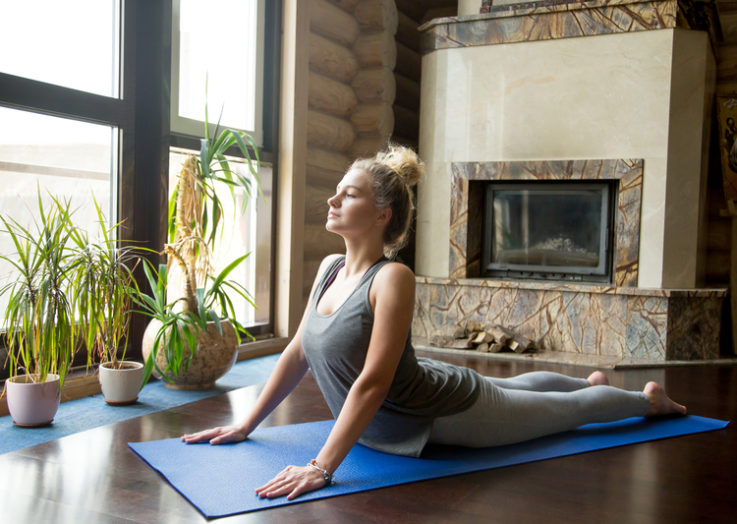Are you feeling tight and tense? Do you find it difficult to move the way you want to? Even if you exercise regularly, it may not be enough if you aren’t incorporating mobility movement into your routine. In fact, you may find your other workouts provide greater results if you add mobility workouts to your routine.
What are Mobility Workouts?
Mobility workouts seem to be the “in thing” these days as folks are learning to incorporate many more facets of full body training into their regimens than ever before. Fitness is no longer about strength and endurance.
Mobility workouts can, and should, be a part of any normal and well-rounded workout routine. But, in our busy world, it may seem that it’s just another thing to add to an “already-difficult-to-fit-into-my-schedule” exercise program.
According to Cristian Plascencia, the senior durability coach at Onnit Academy in Austin, Texas, mobility is about feeling good and being able to move comfortably. He says it’s important to both avoid injuries and reduce the likelihood of their occurrences by using movements that can help you stay supple and durable. Cristian expounds more by saying, “The idea is around building a resilient nervous system and physical body with movement and breathing practices to ensure that joints are working appropriately, and soft tissue is able to move and glide with as little restriction as possible.”
So, What’s the Difference Between Mobility and Flexibility?
Well, here’s a question that has probably stumped more than a few fitness enthusiasts. Perhaps you were among the many still lumping mobility, flexibility, durability, etc. into the same bucket. Is there really a difference between mobility and flexibility? If you’re flexible, aren’t you then also mobile?
It turns out that the shocking answer is actually no. The two are completely different endeavors.
According to the Medical Dictionary, flexibility is the ability of a muscle to passively relax and yield to stretch and stress forces. This includes the range of motion of a joint which is directly affected by muscles, tendons, ligaments, bones, and periarticular structures (functional units like shoulders).
Mobility goes far beyond the simple (but elusive) ability to stretch the muscle but also encompasses the ability to move actively in your environment with ease, motor control, and without restriction.
Why is Mobility Training Important?
Clearly, there are going to be myriad benefits from this type of training. Being able to move your limbs through their full ranges of motion has obvious practical applications. Stimulating and strengthening your joints and the surrounding tissues is important for everyday movements as well as sporting activities. Mobility workouts allow you to experience better overall movement and flexibility, increase your range of motion, and help replenish the joint area with nutrients while circulating synovial fluid.
Try These Mobility Workouts
1. Shoulder Screws—begin by standing with your feet hip-width apart. Bring your arms out to your sides with your elbows locked in a straight position. Lift your right shoulder up while shrugging and roll it forward while turning your hand so your palm faces behind you as you move your arm. Roll it back to its original starting point and repeat the on opposite side. Continue for at least ten repetitions on each side.
You can also perform shoulder circles with your arms straight down by your sides by lifting and gently rolling your shoulders forward and backward.
2. Pigeon Stretch—this stretch will seriously help to loosen up the hips. Since we often tend to favor one side over the other, this type of stretch will help release tight areas while also helping correct imbalances.
Begin on all fours with your knees on a pad or cushion. Move your right knee forward and bend your knee to a 90-degree angle while laying the side of your calf and foot flat on the ground in front of your torso. Remember to keep your foot flexed to help protect your knee.
At the same time, extend your left leg behind you to get a full stretch on the hip flexor, keeping the leg straight and the top of your foot and knee resting gently on the floor. Gently rock back a forth slightly and side to side to loosen up the area.
If this stretch is too intense (and it can be, especially when you’re just getting started with your mobility workouts), place a yoga block, pillow, or blanket directly under the hip and/or knee of your front leg so you can relax into the position. And if it’s still too intense, you can place your front leg higher with your back leg on the floor behind you in a lunge position. The back of a couch, a padded table, or stable chair are all good options to support the front leg.
While many people lean forward and place their forearms or even forehead on the ground in front of them (which you can definitely do), you can get two stretches for the price of one by sitting up straight and tall to really stretch the hip flexor at the same time as you are opening up your hip.
Hold the position for 30 to 45 seconds and remember to breathe! Then repeat on the opposite side.
3. Downward to Upward Dog—begin in a plank position and push your booty upward with legs and arms straight so your hips are your highest point (to look like an inverted V). You may need to either step your feet forward or your hands backward. Focus on opening your back by pulling your shoulder blades together and keeping the spine straight from the tailbone to the top of your head. Open your chest and push your hips toward the ceiling as your heels drop down toward the ground.
Enjoy the wonderful stretch through your hamstrings, hips, back, shoulders, and arms for a full breath in and out.
Then lower your booty down as you “slide” your torso forward and through your arms until your thighs are on the ground and the top of your feet are flat on the floor. Remember to roll your shoulders down instead of allowing them to climb up your neck.
Push up through your arms, keeping them straight, look forward, and stretch out your ribcage, chest muscles, and neck. Hold for a breath in and out and then curl your toes under and repeat the movement back into downward dog.
4. Inner thigh stretch—begin by standing with your feet wider than hip-width apart. Shift your hips to your right while bending your right knee until your left leg is completely straight and your right knee is completely bent. Depending on how flexible you are, place your hands on the ground, a block, or chair in front of you as you drop your hips back, pointing the toes of your left leg upward. Hold for at least one breath in and out.
Next, push up through the heel of the bent knee and return to standing. Shift your hips to the left and repeat on the opposite side. When you become more mobile, you’ll be able to gently rock from left to right in rhythm with your breath while bending each leg in a smooth motion.
5. Walk-around—this exercise helps lengthen the hamstrings and loosen up your spine. Begin by standing with your feet hip-width apart. Pull your belly in to keep your core tight and hinge forward at the hips while keeping both your back and legs straight. Allow your arms to hang down in front of you. Place your fingertips on the ground, or if you aren’t quite flexible enough, use a block, some stairs, or a low table, and gently “walk” your upper body to the right until your hands are next to your right leg. Then, move in the opposite direction and walk them around to the left. Return to center and repeat. Remember to use your breath to deepen the stretch.
6. Body squat—this exercise allows many of the muscles in your lower body to stretch and loosen including the lower back. Begin by standing with your feet wider than hip-width apart, and gently squat down until your hips are close to the ground. To get a deeper squat if you’re less flexible, you can step your feet wider apart and/or allow your heels to come up off the ground to enjoy a full stretch, eventually working toward keeping the heels on the ground.
These mobility workouts can be added to the end of your weight-training workout or between sets or even on their own. After a long day, a short mobility session can help loosen your entire body so it’s easier to move more freely, workout any kinks, and just feel great. Enjoy!









